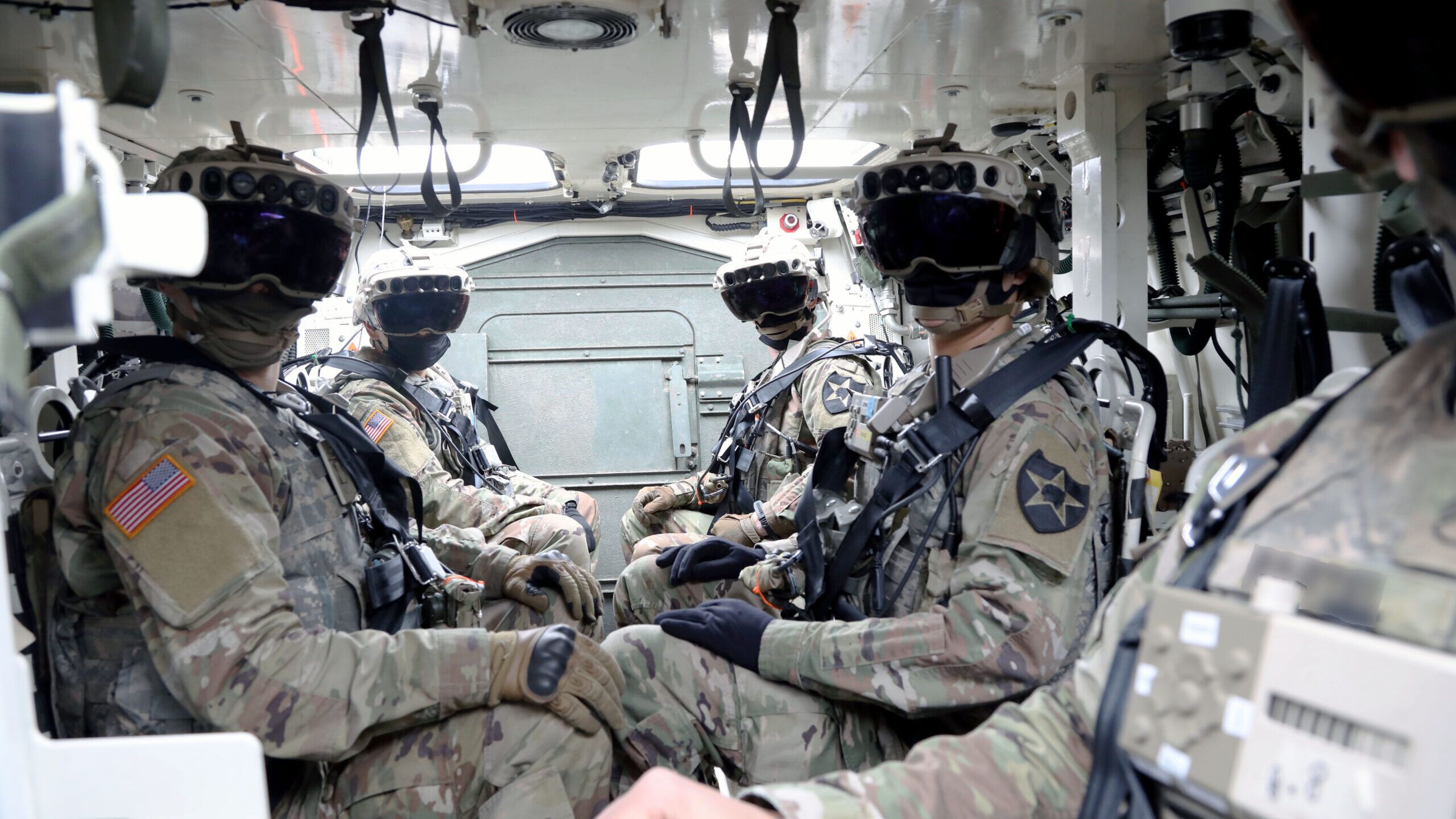
Soldiers don the Integrated Visual Augmentation System Capability Set 3 hardware while mounted in a Stryker in Joint Base Lewis-McCord, WA. (Courtney Bacon/US Army)
WASHINGTON: The US Army is revising the number of modernization programs impacted by a potential year-long continuing resolution, from 19 programs down to 12, according to a spokesperson, after a mix-up that led to erroneous congressional testimony.
Since last year, the service has boasted that 24 of its 35 signature modernization programs would be in the hands of soldiers, either in prototyping or fielded, by fiscal 2023. Last month Army Vice Chief of Staff Gen. Joseph Martin told the House Appropriations Committee that a potential year-long continuing resolution would impact 19 of those 24 programs, as well as delay 71 new start programs.
But after the Army provided the list of 19 signature modernization programs potentially impacted, Breaking Defense discovered an inconsistency: several of the systems listed weren’t on the list of 24 programs previously published by Breaking Defense last year. Upon a request for clarification, the Army investigated and eventually revised the number to 12, finding that some programs that had been listed as signature systems were actually support programs for the larger initiatives.
“A potential yearlong CR would impact 12 of the 24 signature efforts to put equipment in the hands of Soldiers by FY23, not 19 of 24 as previously stated,” Lt. Col. Brandon Kelley said in statement. “We originally counted signature and supporting efforts, for a total of 19 efforts. After reevaluation, we determined 12 are signature efforts and 7 are supporting efforts.”
The 12 potentially impacted programs that were scheduled to be in the hands of soldiers, in some form, are:
- Long-Range Hypersonic Weapon
- Mid-Range Capability
- Armored Multi-Purpose Vehicle
- Robotic Combat Vehicle
- Mobile Protected Firepower
- Unified Network
- Common Operating Environment: CPCE/MCE
- Lower Tier Air and Missile Defense (AMD) Sensor
- IAMD Battle Command System
- Next Generation Squad Weapon
- Squad Immersive Virtual Trainer
- One World Terrain
The remaining seven supporting efforts, erroneously dubbed signature systems, include several programs that exist under the Unified Network and Common Operating Environment efforts, such as the Joint Battle Command System, Mounted Mission Command-Software, signal modernization, and Handheld, Manpack, and Small Form Fit (HMS) radios. The original list also included Armored Vehicle Modernization, which supports the Next-Generation Combat Vehicle Cross-Functional Team. The other two programs are Indirect Fires Protection Capability (IFPC) High Energy Laser and IFPC High Power Microwave, parts of the broader IFPC program.
Altogether the Army’s signature modernization portfolio is made up 31 programs managed by Army Futures Command and four programs run by the Rapid Capabilities and Critical Technologies Office.
The revision is unlikely to set the Army any more at ease about a potential year-long continuing resolution, which must be averted by lawmakers before a Friday deadline. (A stopgap measure is reportedly in the works.)
“All the progress we’ve made over time for the past two years, will be slowed at best [and could] be potentially stopped,” Martin told the subcommittee in January. “Our adversaries are not having the same problem with consistent, predictable, timely funding for these various programs.”
The service’s list of 71 new starts, which can’t begin under a continuing resolution, includes procurement funding for programs such as Mobile Protected Firepower, Next Generation Squad Weapons and Lower Tier Air and Missile Defense (AMD) Sensor. It also includes $19.5 million in RDT&E funds for an Army electronic warfare program called the Terrestrial Layer System-Echelon Above Brigade, as well as four counter-Unmanned Aerial Systems programs that total more than $50 million. New R&D efforts with universities, and several applied research programs are listed.
Move over FARA: General Atomics pitching new Gray Eagle version for armed scout mission
General Atomics will also showcase its Mojave demonstrator for the first time during the Army Aviation Association of America conference in Denver, a company spokesman said.


























